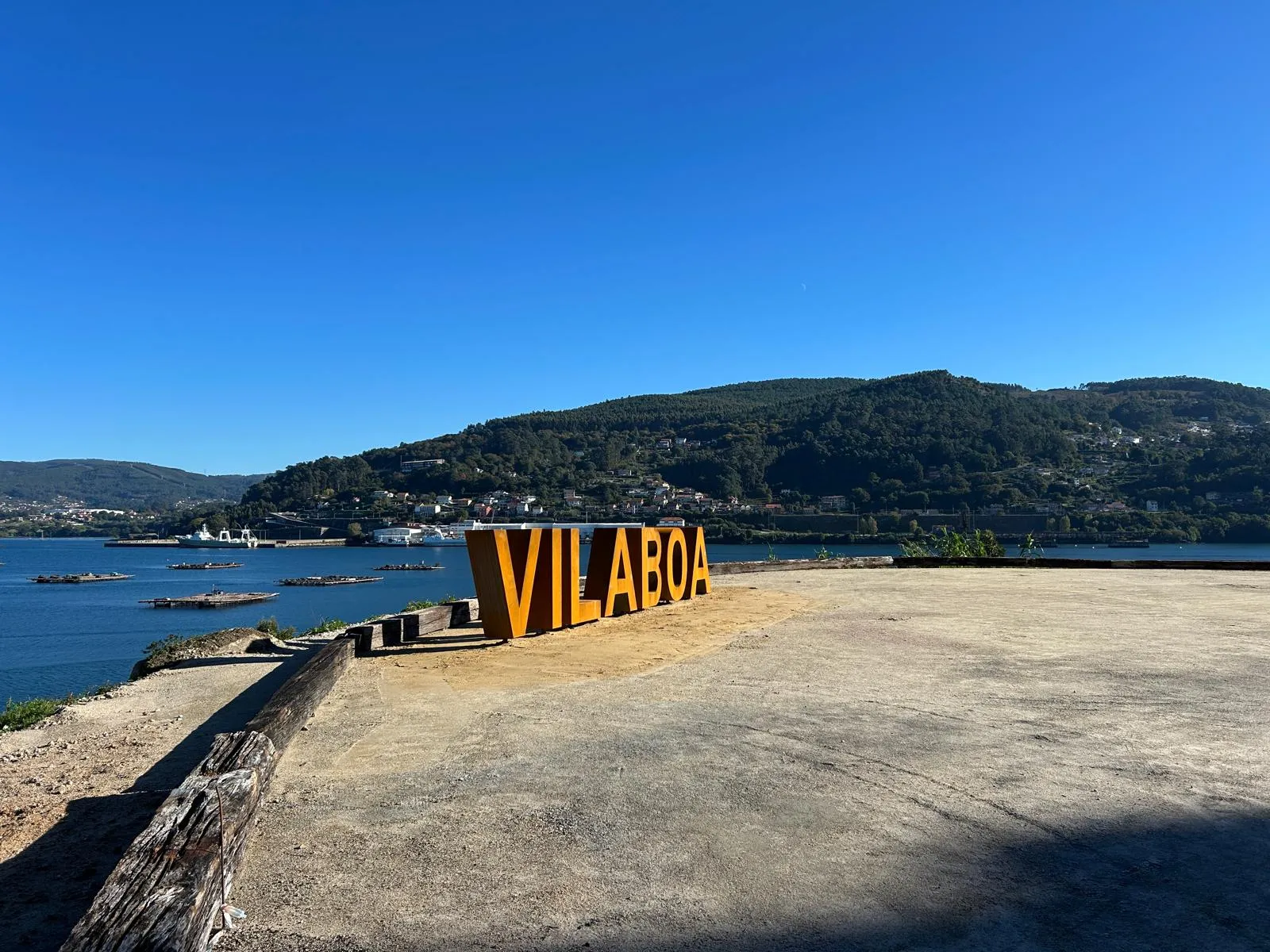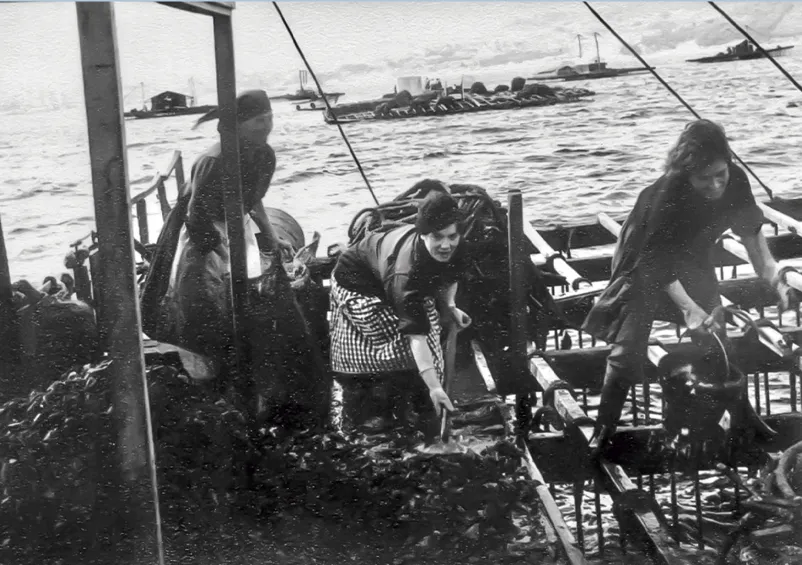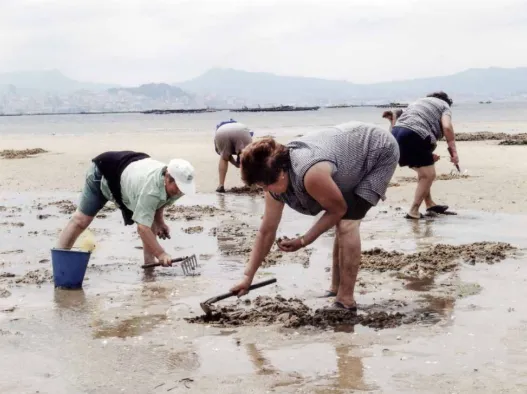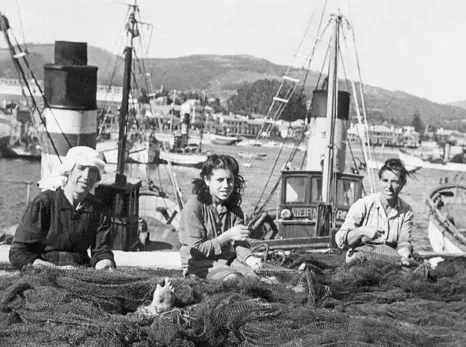
The Bateas
Discover mussel farming in the Pontevedra estuary

Mussel Farming Systems in Galicia
All available tracks
They are farming systems, the most common being for mussels, formed by wooden structures that act as natural floating nurseries. They have been part of the Galician estuaries landscape since the mid-20th century, being a very strong and important sector, where women participate in all production processes, despite often going socially unnoticed.
Audioguía - The Bateas

The structure consists of a eucalyptus wood framework from which ropes hang that allow the bateeiros to collect the mussels when necessary.

About 700 women work today directly in the mussel production process, which represents a more than respectable quarter of the total workers. Women participate in all production processes, from collecting the seed to stringing and final harvest.
It is used to store tools and prepare the ropes, avoiding to a large extent the inclement weather. Not all have one.
They are composed of an iron frame covered with fiberglass and filled with expanded polyester. They allow the batea to stay afloat.
The mexilla (mussel seed) is placed on them, which is wrapped in biodegradable mesh so that they attach correctly. A batea cannot have more than 500 ropes and their maximum length cannot exceed 12 meters.
Formerly made of wood, today of plastic, they are placed on the rope every 30-40 cm to prevent the mussels from sliding towards the seabed.
It is a concrete cube known as "dead" that is attached to the batea by a chain and functions as an anchor.
Between December and April, the mexilla (between 0.5-1cm) is collected from the rocks to continue its growth on the batea.
Stringing is carried out, which consists of fixing the seed (wrapped in a cotton mesh) to the rope while it does not tie itself to it.
When it reaches a size between 7 and 10 cm, it is harvested.
The beginnings of mussel consumption date back to the 8th century BC, when the proliferation of percebeir as rocks began, and until the 5th century AD when it began to be cultivated in artificial hatcheries. In 1945, in the Arousa estuary, Mr. Alfonso Ozores, Lord of Rubianes and Marquis of Aranda, decided to try its suspended cultivation, giving rise to what would be the first batea.
Mussels are filter-feeding animals that can filter up to 8 liters of water per hour.
Galician mussels reach commercial size in only 17 months, much earlier than in other places due to the quality of our waters.
With 68% of all bateas, the Arousa Estuary is the most productive.
Although not visible externally, mussels have different shades depending on their sex, with females being orange and males being cream-colored.

Discover mussel farming in the Pontevedra estuary

Essential protagonists of the maritime economy Life linked to the sea and its traditional trades

Life linked to the sea and its traditional trades